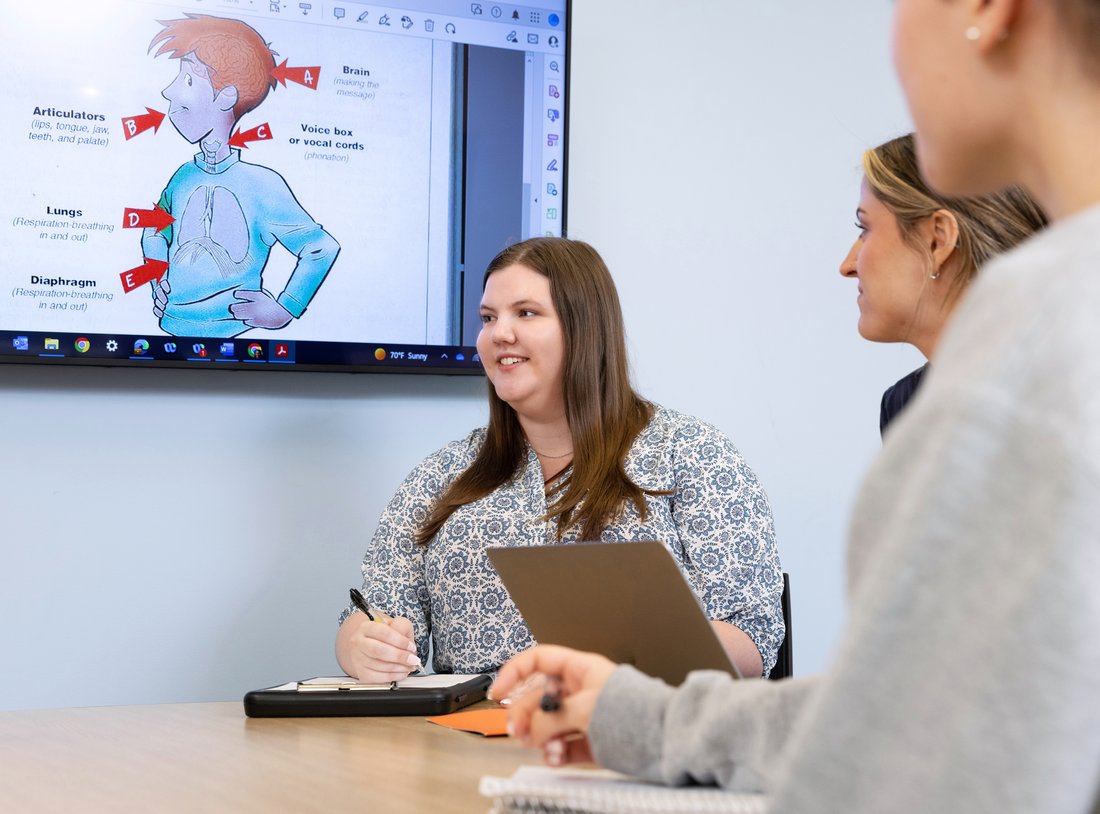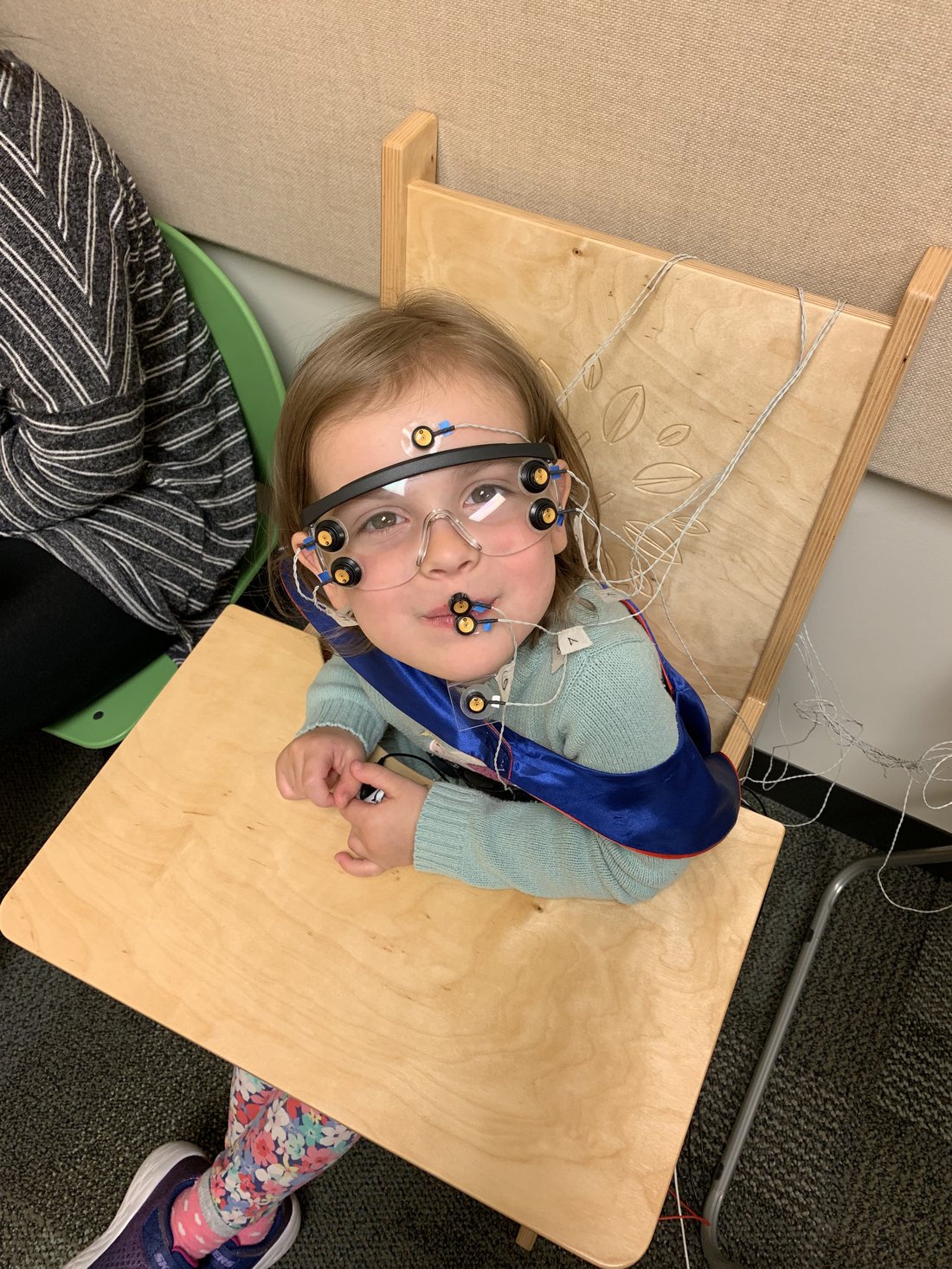Medical Training, On Campus

From hospitals and nursing homes to private practices, speech-language pathologists work in a wide range of clinical settings. Before entering these high-stakes environments, College of Arts and Sciences (A&S) students gain experience through externships—supervised clinical placements where they conduct assessments, implement treatment plans and document progress for patients of all ages with communication and swallowing disorders.
For many speech-language pathology students, however, stepping into their first hospital externship can feel overwhelming. They may encounter unfamiliar medical equipment, complex patient charts and the fast-paced intensity of a healthcare setting—impacting both their confidence and the quality of care they provide.
But what if students could experience that first day in a hospital without the pressure? What if they could ask questions and build confidence in a realistic, risk-free environment?
The Department of Communication Sciences and Disorders (CSD) at Syracuse University has answered this challenge with a state-of-the-art medical simulation laboratory. This innovative space, located in the Gebbie Speech, Language and Hearing Clinic, is transforming how speech-language pathology students prepare for clinical practice, offering high-fidelity simulations that replicate hospital environments—without the stress of working with real patients.
Maximizing Learning
The simulation lab features a fully equipped mock hospital room complete with a functional hospital bed, vital signs monitors and medical equipment including operational oxygen delivery systems and suctioning apparatus. Students practice everything from cognitive screenings to swallowing therapy in an environment designed to replicate acute care settings they'll encounter in their professional careers.
The lab incorporates advanced technology including one-way mirrors for observation, remote video recording capabilities and equipment that allows instructors to simulate various patient conditions. As students progress, the program transitions from instructor-led simulations to scenarios with professional standardized patients, further increasing the realism of training experiences.
"There is no reset button in real life, but there's a reset button in a simulation," says Brianna Hammerle, assistant teaching professor in CSD and director of the simulation lab. “This approach allows students to make mistakes, receive immediate feedback and repeat procedures until they achieve competency without risking patient safety.”
The simulation lab serves not only to prepare students but also to ease their transition into clinical environments. "It helps reduce the anxiety students might feel when entering those settings," explains Colleen Gargan, Gebbie Speech-Language Clinic Director and associate teaching professor in CSD. “I’ve received feedback from students and community supervisors that the simulation lab has enhanced student readiness for medical externships, which was a key objective when the initiative was first proposed.”

Students are already experiencing the benefits of this immersive learning approach. "It's nice to be able to be in the medical setting, but have it be a low-risk situation, where I'm free to pause, ask questions, ask for clarification, and I can receive that immediate feedback right there in the session," says Mindy Robinson, a speech-language pathology graduate student in A&S.
Cultivating Collaboration
The lab supports a distinctive feature of the speech pathology program: its strong emphasis on interdisciplinary collaboration. Students work alongside peers in registered dietetics, physical therapy, respiratory therapy and occupational therapy, gaining valuable experience as part of a cohesive healthcare team. While the simulation lab is launching within the speech pathology program, it is also designed to benefit students in audiology, who frequently work in medical and hospital environments. This interdisciplinary approach reflects the team-based care model they will encounter in clinical settings.
Historically, CSD relied on partner institutions for training spaces. With the addition of a new on-campus simulation lab, CSD can now host interdisciplinary training sessions, reciprocating with Upstate Medical University's physical therapy and respiratory therapy programs, as well as Le Moyne College's occupational therapy program. This high-fidelity simulation space enables the department to expand collaborative education opportunities, better preparing students for the integrated nature of hospital and clinical settings.
Enhancing Student Outcomes
The simulation lab is a strategic investment that enhances student readiness for patient care, aligning with the “Health and Well-Being” pillar of A&S’s new Academic Strategic Plan. By emphasizing holistic and inclusive approaches to healthcare, the facility provides students with hands-on clinical training and meaningful opportunities to develop innovative treatment solutions.
“Everything I learn in this lab, I can take something from it and apply it to another setting,” notes Robinson.
By bridging the gap between classroom learning and clinical practice, CSD’s medical simulation lab plays a vital role in preparing future healthcare professionals to make an immediate impact in their field.
Published: Oct. 13, 2025
Media Contact: asnews@syr.edu


